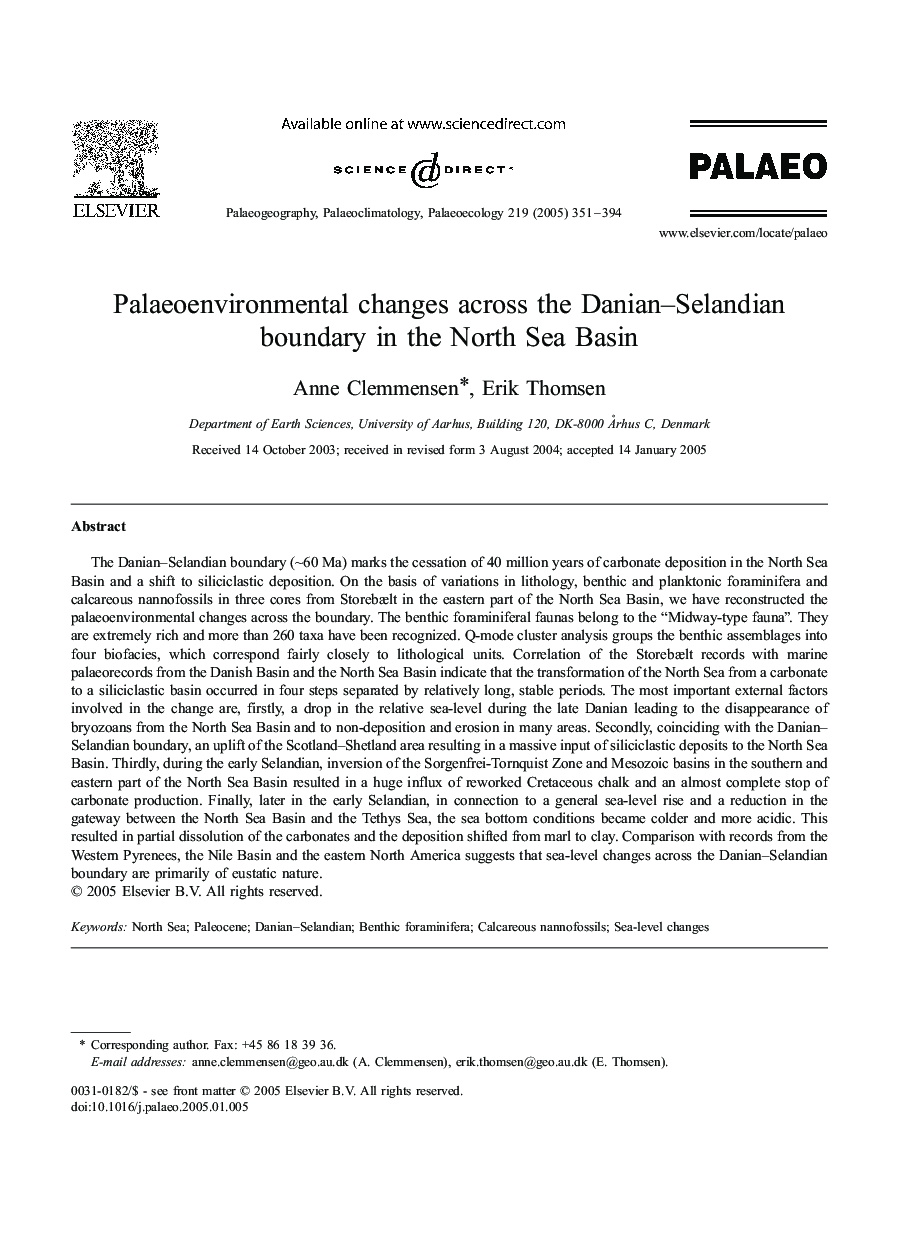| کد مقاله | کد نشریه | سال انتشار | مقاله انگلیسی | نسخه تمام متن |
|---|---|---|---|---|
| 9463074 | 1622398 | 2005 | 44 صفحه PDF | دانلود رایگان |
عنوان انگلیسی مقاله ISI
Palaeoenvironmental changes across the Danian-Selandian boundary in the North Sea Basin
دانلود مقاله + سفارش ترجمه
دانلود مقاله ISI انگلیسی
رایگان برای ایرانیان
کلمات کلیدی
موضوعات مرتبط
مهندسی و علوم پایه
علوم زمین و سیارات
فرآیندهای سطح زمین
پیش نمایش صفحه اول مقاله

چکیده انگلیسی
The Danian-Selandian boundary (â¼60 Ma) marks the cessation of 40 million years of carbonate deposition in the North Sea Basin and a shift to siliciclastic deposition. On the basis of variations in lithology, benthic and planktonic foraminifera and calcareous nannofossils in three cores from Storebælt in the eastern part of the North Sea Basin, we have reconstructed the palaeoenvironmental changes across the boundary. The benthic foraminiferal faunas belong to the “Midway-type fauna”. They are extremely rich and more than 260 taxa have been recognized. Q-mode cluster analysis groups the benthic assemblages into four biofacies, which correspond fairly closely to lithological units. Correlation of the Storebælt records with marine palaeorecords from the Danish Basin and the North Sea Basin indicate that the transformation of the North Sea from a carbonate to a siliciclastic basin occurred in four steps separated by relatively long, stable periods. The most important external factors involved in the change are, firstly, a drop in the relative sea-level during the late Danian leading to the disappearance of bryozoans from the North Sea Basin and to non-deposition and erosion in many areas. Secondly, coinciding with the Danian-Selandian boundary, an uplift of the Scotland-Shetland area resulting in a massive input of siliciclastic deposits to the North Sea Basin. Thirdly, during the early Selandian, inversion of the Sorgenfrei-Tornquist Zone and Mesozoic basins in the southern and eastern part of the North Sea Basin resulted in a huge influx of reworked Cretaceous chalk and an almost complete stop of carbonate production. Finally, later in the early Selandian, in connection to a general sea-level rise and a reduction in the gateway between the North Sea Basin and the Tethys Sea, the sea bottom conditions became colder and more acidic. This resulted in partial dissolution of the carbonates and the deposition shifted from marl to clay. Comparison with records from the Western Pyrenees, the Nile Basin and the eastern North America suggests that sea-level changes across the Danian-Selandian boundary are primarily of eustatic nature.
ناشر
Database: Elsevier - ScienceDirect (ساینس دایرکت)
Journal: Palaeogeography, Palaeoclimatology, Palaeoecology - Volume 219, Issues 3â4, 18 April 2005, Pages 351-394
Journal: Palaeogeography, Palaeoclimatology, Palaeoecology - Volume 219, Issues 3â4, 18 April 2005, Pages 351-394
نویسندگان
Anne Clemmensen, Erik Thomsen,